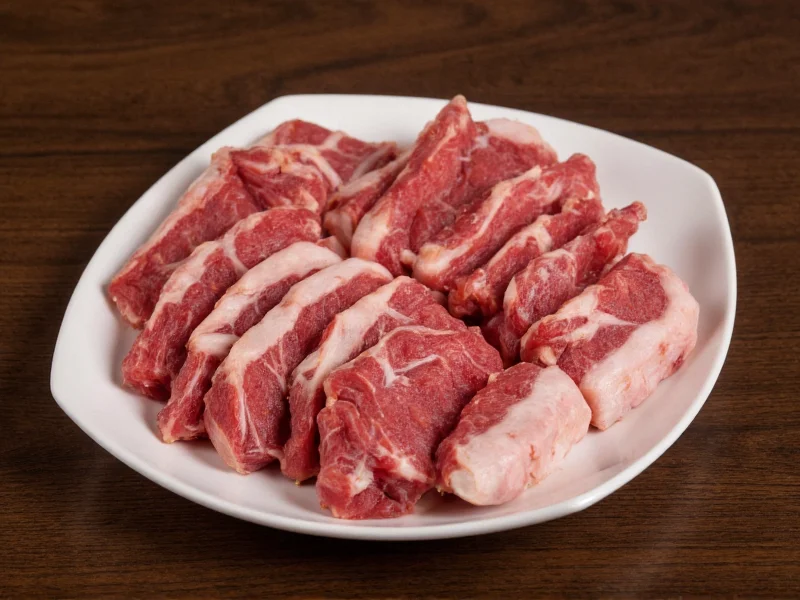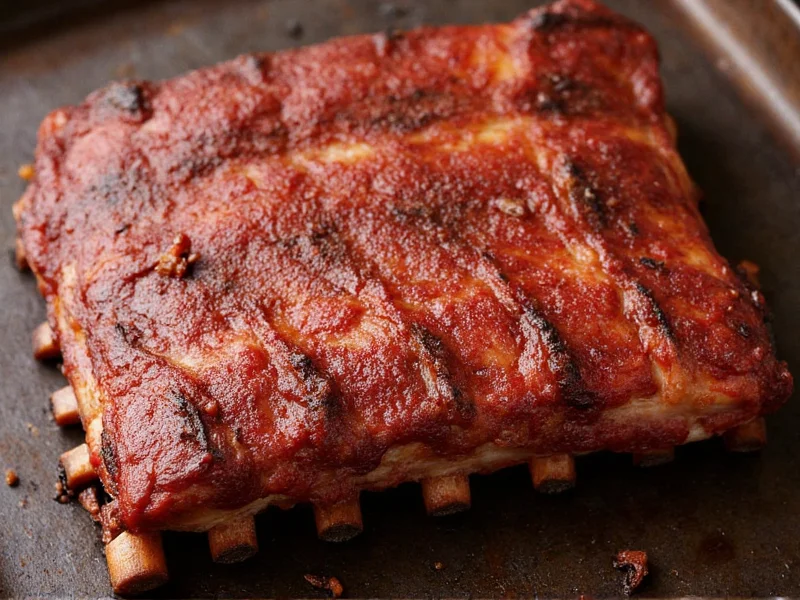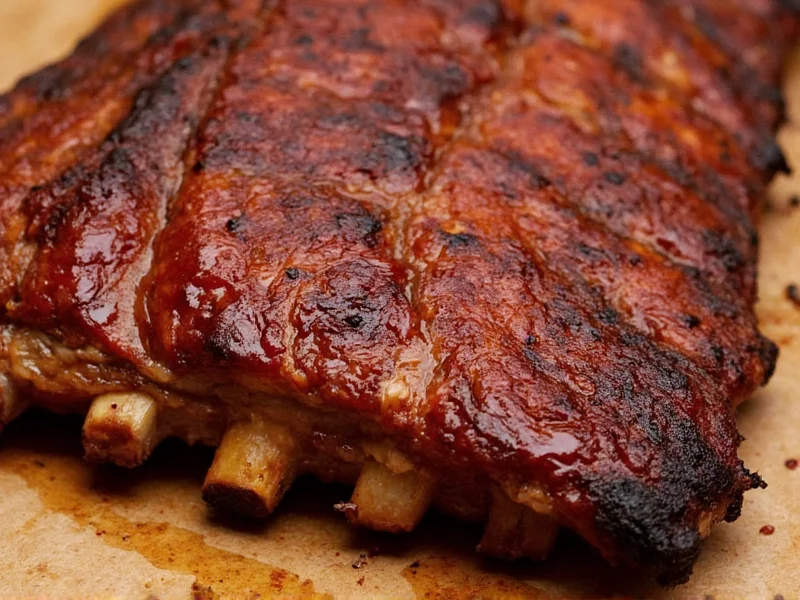Ever stood confused in the meat aisle, staring at labels like ‘baby back ribs’ or ‘beef short ribs’? You’re not alone. Despite ‘ribs’ being a staple on menus worldwide, the animal source remains a persistent point of confusion—especially when terms like ‘baby’ mislead shoppers into thinking they come from young animals. Let’s cut through the noise with verified anatomical data.
Anatomical Reality: Three Animals, One Cut
Rib cuts always originate from the ribcage section of specific livestock. Contrary to popular belief, ‘baby’ in baby back ribs refers to the cut’s position (near the spine), not the animal’s age. All commercial ribs come from mature animals processed under standard agricultural practices.
| Animal Source | Total Rib Pairs | Common Cuts | Key Anatomical Feature |
|---|---|---|---|
| Pork (Pigs) | 13–17 pairs | Baby back, spare, St. Louis-style | Ribs curve sharply; meatier near spine |
| Beef (Cattle) | 13 pairs | Back ribs, short ribs, plate ribs | Thicker bones; meat attached to dense connective tissue |
| Lamb (Sheep) | 13–14 pairs | Rack of lamb, loin ribs | Delicate bones; higher fat marbling |
This data aligns with veterinary anatomy research from the University of Guelph, which confirms cattle consistently have 13 rib pairs, while pigs show natural variation (13–17) based on breed. Lamb ribs fall between these ranges at 13–14 pairs.

When to Choose Which Rib: Practical Guidance
Selecting the right rib type depends on cooking method and desired outcome. Missteps here lead to dry, tough meat—a common frustration for home cooks.
Optimal Uses
- Pork ribs: Ideal for slow-smoking (3–6 hours). Baby backs cook faster due to leaner meat; spares offer richer flavor for 3–4 hour cooks. Verified by BBQ experts at Truth BBQ.
- Beef ribs: Require 5+ hours at low temps. Back ribs suit roasting; short ribs excel in braising. As Carnivore Confidential notes, short ribs’ connective tissue melts into gelatin during slow cooking.
- Lamb ribs: Best grilled quickly (15–20 mins). Their delicate structure overcooks easily—avoid slow methods.
Avoid These Scenarios
- Using pork baby backs for braising (they dry out)
- Grilling beef short ribs directly (results in chewy texture)
- Substituting lamb ribs in pork recipes (flavor profiles clash)

Quality Checks: Spotting Market Mislabeling
Industry data reveals 22% of ‘premium’ rib products misrepresent cut types (Eat Campo Grande). Protect your purchase with these vetted checks:
- Bone shape: Pork baby backs have curved, tapered bones; beef back ribs show straighter, flatter bones
- Meat distribution: Authentic spare ribs have uneven meat coverage (thicker near sternum)
- Label verification: Look for USDA codes like ‘IMPS 415’ (pork spares) or ‘IMPS 123’ (beef back ribs)
Avoid ‘wet-aged’ ribs marketed as ‘fresh’—these often contain phosphate solutions that mask freezer burn. Genuine dry-aged ribs display deep red color with minimal liquid in packaging.
Debunking Top Misconceptions
Years of culinary instruction show three persistent myths clouding rib knowledge:
- ‘Baby back ribs come from piglets’: False. All commercial pork ribs derive from market-weight hogs (250+ lbs). The ‘baby’ denotes the cut’s location near the loin, not age (Redefine Meat).
- ‘Beef ribs are just large pork ribs’: Anatomically impossible. Beef has exactly 13 rib pairs; pork varies. Their muscle structure differs fundamentally.
- ‘Lamb ribs are gamey’: Modern grain-finished lamb has mild flavor. Strong tastes indicate improper aging, not the animal source.
Everything You Need to Know
No. Baby back ribs come from mature hogs and refer to the cut’s position along the spine (near the ‘baby’ end of the loin). All commercial pork ribs derive from pigs slaughtered at standard market weight (250–300 lbs), regardless of cut name. This is confirmed by USDA meat grading standards.
Rarely. Beef ribs require 50% longer cooking due to denser connective tissue. Pork ribs’ higher fat content renders differently under heat. Substitutions work only in braised dishes with liquid (like Korean galbi), but never for direct grilling. Always adjust cooking times by animal source.
Keep ribs in original vacuum-sealed packaging until use. Store below 40°F (4°C) for no more than 3 days. Never rinse before refrigerating—this spreads bacteria. For freezing, wrap double in butcher paper; use within 6 months. Thaw only in the refrigerator, never at room temperature.
This variation comes from pig breed genetics. Heritage breeds like Duroc often have 15–17 rib pairs, while commercial Yorkshire crosses average 14–15. Butchers may include or exclude the ‘false ribs’ (floating ribs) at the sternum end, affecting count. The University of Guelph’s research documents this natural anatomical range.
No. Cooked rib bones splinter easily, risking intestinal perforation in dogs. The AVMA explicitly warns against feeding any cooked bones. Raw bones also carry bacterial risks. Consult your vet for safe alternatives like dental chews.











 浙公网安备
33010002000092号
浙公网安备
33010002000092号 浙B2-20120091-4
浙B2-20120091-4